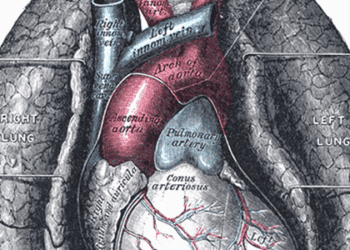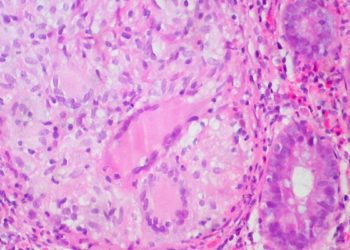Long-term physical activity is associated with several health markers in the serum metabolome
 Jan 2nd –
Jan 2nd –  Polyunsaturated and omega-3 fatty acid levels are the metabolic factors most strongly associated with physical activity.
Polyunsaturated and omega-3 fatty acid levels are the metabolic factors most strongly associated with physical activity.
 [tabs tab1=”2MM Rundown” tab2= “2MM Full Report” tab3=”About the Authors”]
[tabs tab1=”2MM Rundown” tab2= “2MM Full Report” tab3=”About the Authors”]
[tab]
Image: PD
1. Persistently physically active individuals have a greater number of metabolic markers of health compared to their inactive counterparts.
2. Polyunsaturated and omega-3 fatty acid levels are the metabolic factors most strongly associated with physical activity.
The authors of this article demonstrated an associated between physical activity and several metabolomic measures. The greatest strength of this study resided in its participants. By incorporating a twin cohort that was discordant in long-term physical activity, genetic influences, which may confound the connection between physical activity and serum metabolome, were largely eliminated. Furthermore, this study was undertaken in multiple population-based cohorts with varied mean ages, thus, broadening the applicability of its findings to a larger population.
However, this study also faced several major limitations. First, the twin cohort utilized was small in size, hindering the statistical power of the data collected and thus reducing the ability of the study to detect true differences between the twin pairs. Second, each of the three population-based cohorts were categorized into persistently active or inactive groups using different measurements and criteria, and thus the findings from the combined data may not be an accurate reflection of the true differences between the two categories. Additionally, physical activity was assessed via questionnaires and thus the data collected may have been subject to bias due to self-reporting.
Click to read the study in Circulation
[/tab]
[tab]
Image: PD
1. Persistently physically active individuals have a greater number of metabolic markers of health compared to their inactive counterparts.
2. Polyunsaturated and omega-3 fatty acid levels are the metabolic factors most strongly associated with physical activity.
Primer: Obesity stands as one of the greatest threats to the health of the human population. With nearly 36% of the Americans now falling into the obese category of body mass index (BMI), the obesity epidemic stands to drastically change the landscape of medicine and public health. There have been many etiologies proposed for the development of this growing weight phenomenon, but one leading theory suggests that the rise of obesity over the past few decades may be partially explained by a decrease in the amount of physical activity performed by individuals on a daily basis. Indeed, moderate physical activity is required in less than 20% of today’s jobs – a vast departure from 1960 when approximately 50% of jobs required this level activity.
Obesity carries with it an increased risk for numerous different disease states ranging from coronary artery disease and stroke to various forms of cancer. And in the past few years, researchers have sought to pinpoint the exact molecular processes linking obesity to these illnesses. Findings from recent studies have identified several different serum markers, including isoleucine, glucose, fatty acid composition, and lipoprotein classification, which have been shown to be altered in obesity and the related disease entities. The authors of this article sought to explore the difference between the metabolome of sedentary individuals and their active counterparts and identify serum measures that may correlate with levels of physical activity.
Background reading:
- Trends over 5 decades in U.S. occupation-related physical activity and their associations with obesity [PLOS].
- Etiology and natural history of obesity [UpToDate].
- High-throughput serum NMR metabonomics for cost-effective holistic studies on systemic metabolism [Analyst].
This [retrospective cohort] study: 4 cohorts (1 same sex twins cohort, 3 population-based, sex- and age-matched cohorts) were utilized with participants classified as either persistently active or inactive. Serum samples were obtained from participants and analyzed using a high throughput NMR metabolomics protocol. The resulting data showed that, compared with inactive participants, active participants had lower concentrations of VLDL-, LDL-, and IDL-cholesterol; higher levels of large HDL-cholesterol; a lower ApoB/apoA1 ratio; a lipid profile higher in polyunsaturated fatty acid; and lower levels of isoleucine, α1-acid glycoprotein, and, glucose. Many of these associations remained even after adjusting for age, sex, and visceral adiposity. Finally, polyunsaturated and omega-3 fatty acids were the metabolome factors found to be most closely associated with physical activity level.
In sum: The authors of this article demonstrated an associated between physical activity and several metabolomic measures. The greatest strength of this study resided in its participants. By incorporating a twin cohort that was discordant in long-term physical activity, genetic influences, which may confound the connection between physical activity and serum metabolome, were largely eliminated. Furthermore, this study was undertaken in multiple population-based cohorts with varied mean ages, thus, broadening the applicability of its findings to a larger population.
However, this study also faced several major limitations. First, the twin cohort utilized was small in size, hindering the statistical power of the data collected and thus reducing the ability of the study to detect true differences between the twin pairs. Second, each of the three population-based cohorts were categorized into persistently active or inactive groups using different measurements and criteria, and thus the findings from the combined data may not be an accurate reflection of the true differences between the two categories. Additionally, physical activity was assessed via questionnaires and thus the data collected may have been subject to bias due to self-reporting.
Click to read the study in Circulation
By [DM] and [MK]
© 2012 2minutemedicine.com. All rights reserved. No works may be reproduced without written consent from 2minutemedicine.com. Disclaimer: We present factual information directly from peer reviewed medical journals. No post should be construed as medical advice and is not intended as such by the authors or by 2minutemedicine.com. PLEASE SEE A HEALTHCARE PROVIDER IN YOUR AREA IF YOU SEEK MEDICAL ADVICE OF ANY SORT. Content is produced in accordance with fair use copyrights solely and strictly for the purpose of teaching, news and criticism. No benefit, monetary or otherwise, is realized by any participants or the owner of this domain.
[/tab]
[tab]
 Devin Miller: Devin is a 3rd year MD candidate at Johns Hopkins University.
Devin Miller: Devin is a 3rd year MD candidate at Johns Hopkins University.
 Mimmie Kwong: Mimmie is a 3rd year M.D. candidate at Johns Hopkins School of Medicine in Baltimore, MD.
Mimmie Kwong: Mimmie is a 3rd year M.D. candidate at Johns Hopkins School of Medicine in Baltimore, MD.
[/tab]
[/tabs]






![[Physician Comment] Suture closure superior to staples after cesarean delivery](https://www.2minutemedicine.com/wp-content/uploads/2013/01/xAtraumatisches_Nahtmaterial_17-e1356930998526.jpg.pagespeed.ic_.9-GxOSos0V-75x75.jpg)